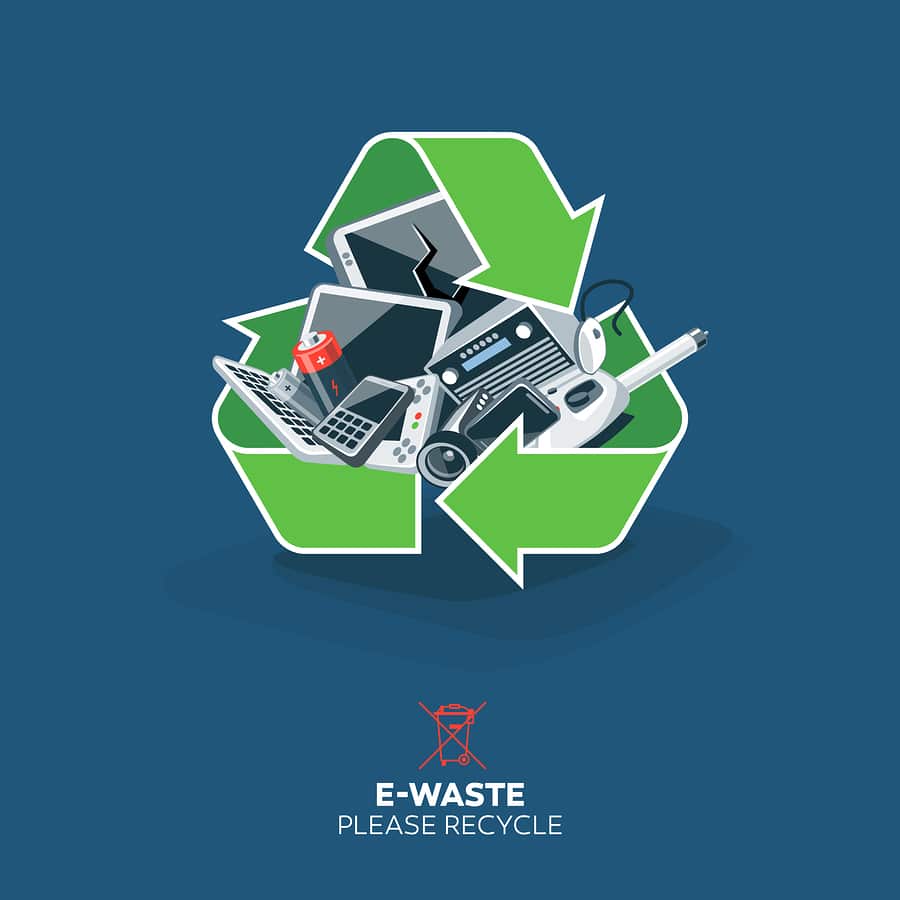Planning for Responsible E-Waste Disposal

E-waste has become a hot button issue for many companies looking to clean up their corporate image, comply with expanding environmental laws, and do their part for the planet. Everyone knows it is not only unacceptable, but dangerous to dump e-waste, not just because of the harm toxic components do to the environment, but because sensitive data stored on devices could lead to data breaches and consumer identity theft.
While your North Dakota business probably has myriad reasons for wanting to implement e-waste processes, it doesn’t happen overnight. You’ll need a comprehensive strategy in place, along with suitable partnerships, in order to make your e-waste program successful. Here are just a few ways to plan for responsible e-waste disposal.
Thoughtful Policies and Procedures
Since you can’t really dump your e-waste into a typical recycle bin for pickup, as it violates both environmental and consumer privacy laws, you’ll need to put some thought into creating thoughtful policies and procedures that minimize risks and ensure compliance with applicable laws. This could start with life-cycle planning for devices, include protocols for device tracking, and ensure safe storage on-site when equipment reaches the end of its useful life.
However, you also need to account for where electronics go after they leave the premises, including secure transport and storage and reliable destruction and recycling. This means taking the time to find a reputable and reliable partner that offers safe and transparent operations that meet your high standards.
Assign Responsibility
The buck has to stop somewhere, and when it comes to managing your vast inventory of computer equipment and electronic devices, you need a person or department to handle tracking devices as they’re assigned to employees and then returned for reassignment, repair, or disposal. Often, this duty falls to the IT department or possibly a facilities manager, but you need someone in charge of tracking inventory to minimize risks of loss and subsequent issues like data theft.
Employee Training
Data security should be a company-wide initiative, and it doesn’t start and end with devices in use. While you certainly need to protect data with passwords, encryption, and remote security like VPN, for example, you also need to make sure employees are fully aware of your policies and procedures when it comes to IT asset disposition. Requiring employees to check in devices or report them missing or stolen so they can be remotely wiped is just common sense. Making them aware of penalties for failure to follow rules can help to ensure compliance.
Partner with a Reputable ITAD Service Provider
You can do a lot on your own to plan for successful e-waste disposal, but at some point, you’ll need to partner with a certified ITAD service provider to take unusable or obsolete equipment off your hands to shred and recycle it, or alternately, wipe and remarket it. A reliable partner will offer compliance with all applicable environmental and consumer privacy laws, as well as full transparency and proof of destruction and recycling for your records.
North Dakota businesses interested in responsible e-waste disposal can contact the experienced professionals at SEAM at 605-274-7326 (SEAM) or online to request a quote.
SEAM provides IT recycling and data destruction services including onsite shredding and hard drive wiping to South Dakota, North Dakota, Minnesota, Iowa, and Nebraska.
Schedule a pickup or contact us for more information.





